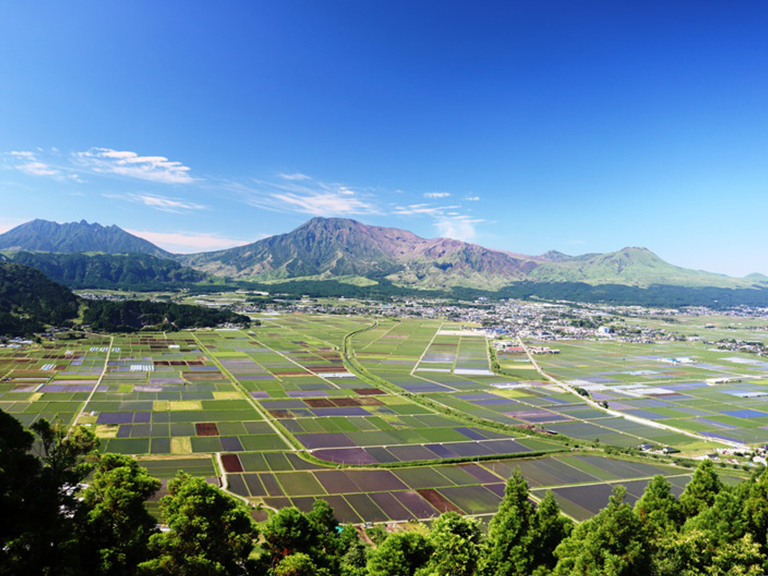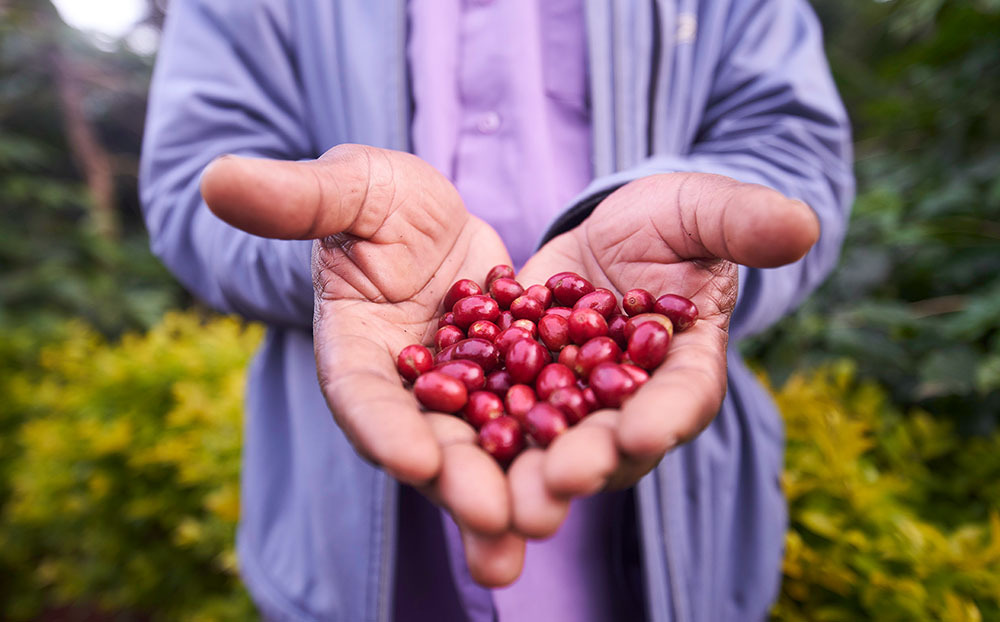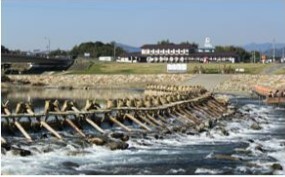
Cattle grazing on the Aso Grasslands (Source: Aso GIAHS)
Issue
Harsh geological and geographical landscapes offer various challenges for sustainable management of agricultural lands
Solution
The combination of traditional knowledge and modern technologies under the GIAHS approach is a way to manage both agriculture and human well-being
Sustainable agriculture system supported by local and traditional knowledge
GIAHS are remarkable land use systems and landscapes, which are rich in globally significant biological diversity, evolving from the co-adaptation of a local community with its environment for sustainable development as well as human well-being (Reyes et al., 2020; FAO, 2018). For a place or region to be categorized as a GIAHS, it should have the following characteristics: a) it provides food and livelihood security; b) it should have agro-biodiversity; c) it inherits the local and traditional knowledge systems; d) it should have culture, value, and social organizations; and e) it should have landscape or seascape features. As of 2020, eleven GIAHS sites are recognized in Japan, including the Aso Grasslands which were listed in 2013.
The Aso Grasslands are located in the Aso region of Kumamoto Prefecture, Kyushu, Japan, and spread around active volcanic craters and a huge caldera (one of the world’s largest calderas, stretching 18 km from east to west and 25 km from north to south). Despite the unfavorable conditions for agriculture (highland cool climate and volcanic soil with comparatively few nutrients), the local people have adapted very well to sustain their livelihood. They have improved the volcanic soil of the cold uplands and started cultivation by creating paddies and dry fields for farming, and grassland pastures for grazing and mowing. One of the unique features of these agricultural practices is the rotation of grassland use through cycles of effective burning, grazing, and mowing, which conserves both biodiversity and agricultural landscapes. This results in a flourishing agricultural community in this area, including rice farming, outdoor vegetable horticulture, greenhouse horticulture, and stockbreeding.

Burning of grass by humans (Source: Aso GIAHS)
The agricultural community in this region has identified different zones that are suitable for different crops, for example various summer-autumn vegetables such as tomatoes, spinach, asparagus, radish, cabbage, and strawberries, or flowers such as gentian and lisianthus, are grown in the cool climate on the plain farmland at the bottom of the caldera. The community has also popularized the use of indigenous vegetables like akado-imo and akado-zuke. In addition, stockbreeding was promoted to take advantage of the vast pastoral resources available on the grasslands. For this grassland, raising Japanese Red Cattle is very convenient and profitable as they can easily be grazed and because of the high market value for their meat. Japanese Red Cattle are often reared alongside horses and stockbreeding consists of about a 50% share of total agricultural productivity.
The local people and government have adopted the concept of GIAHS (combination of the traditional knowledge for local agriculture, farming methods, and rural culture, with modern scientific technologies and infrastructure) in a very successful manner. However, to sustain this GIAHS in the long term, more active participation from each group within the community is needed, such as when people with different knowledge help each other and pass this key knowledge to the younger generation. One example of this is the management of grassland for grazing cows and horses. The grasses serve as their primary feed or the bedding for their stables and the composted manure is then used in the fields for paddy and dry field farming. The remarkable feature of the Aso region lies in this dynamic system of sustainable agriculture through cyclical grassland use and its management.

Aso Valley after rice planting (Source: Aso GIAHS)
The key points for GIAHS initiatives in the Aso region are:
- Knowledge systems and adapted technologies. For a long time, the grasslands have been used as grazing fields for cows and horses or have been mown so that the grass can then be used to feed these animals. In turn, cattle were used for ploughing the farmlands and meat production. However, with the invention of advanced technologies for agriculture, the cattle are not being used for farming and ploughing and the physical connection between communities and grasslands is being lost. Now, the grasslands are managed by burning as it is cost saving and helps to eradicate destructive insects.
- Culture, value systems, and social organizations. Many rituals and festivals are organized by the local people to keep them connected and to protect the harvest from frost and other natural hazards. Also, different communities are divided into cooperative units, which then take care of the grasslands under their common lands.
- Protection of semi-natural grassland and its biodiversity. The protection of biodiversity in semi-natural environments is vitally important to preserve the unique landscape. All flora and fauna are classified under different color codes based on their status and conservation needs. Three colors, viz. red, green, and yellow, are being used to indicate endangered, safe, and vulnerable categories, respectively. This helps to enhance people’s awareness about these species and to place extra effort towards their preservation.
- Use of grass compost for their agricultural practices. Using grass compost for agricultural practices provides a win-win situation for the local people as they can utilize the grassland for both grazing and getting compost.
In summary, the art of harmonizing with this hostile environment to protect the local resources (farming, cattle, scenery etc.) is a natural part of the local culture and this must be cultivated in a more systematic manner so that future/younger generations also receive the benefits of an NbS for human well-being (Aso GIAHS website).
Location
Related Information
- Aso Regional GIAHS Executive Committee, Aso GIAHS
- Food and Agriculture Organization (FAO) (2018) Globally Important Agricultural Heritage Systems: Combining Agricultural Biodiversity, Resilient Ecosystems, Traditional Farming Practices and Cultural Identity. Food and Agriculture Organization. Rome, Italy, pp. 48.
- Reyes, S.R.C., Miyazaki, A., Yiu, E., & Saito, O. (2020) Enhancing sustainability in traditional agriculture: Indicators for monitoring the conservation of Globally Important Agricultural Heritage Systems (GIAHS) in Japan. Sustainability, 12, 5656.




